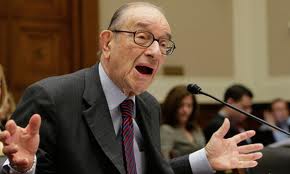From FT.com “Hedge fund nightmare turns into a dream” by Miles Johnson:
Do computers that trade financial markets ever have nightmares about losing money? It is a question investors have asked in recent years of the hedge funds that use automated algorithms and models to buy and sell billions of dollars of assets. Having almost consistently made money in the decade leading up to the financial crisis, these so-called trend following hedge funds appeared to have been scrambled by the high correlation across markets caused by ultra-low interest rates and central bank intervention. While the money being lost was just another data entry for the computers buying and selling assets ranging from pork belly futures to Japanese government bonds, their creators faced the very human stress of investors losing faith in their investment strategy. As the funds came under huge pressure to remodel their apparently malfunctioning computer programs, some investors even began to argue that trend following systems were permanently broken – that the mathematicians and scientists should close down their spread sheets for good. “No matter how much we have a statistical, disciplined and scientific approach to investing, that doesn’t mean that as a human you don’t watch your returns going down in periods of poorer performance and experience all the negative emotions that losses entail,” says Ewan Kirk, chief investment officer of UK-based hedge fund manager Cantab. But the managers, who go as far as sending researchers to the British National Archives to extract grain prices from the Domesday Book to construct trend following models, remained convinced the strategy would recover. “When people doubted trend following, it reminded me of people giving up on value investing before the technology bubble burst, at exactly the wrong time,” says Sandy Rattray, chief executive of Man Group’s AHL, one of the largest and oldest of this type of hedge fund. “Studies have shown that momentum has worked well over long periods. It was a brave person who said that momentum was permanently broken, but many did at the beginning of 2014.” Having begun the year as the most hated hedge fund strategy, many of these trend following funds have emerged as the best performing funds of 2014, outpacing their stock picking rivals who rely on mere human intuition to make money. Helped by large moves in commodities, energy prices and interest rates, as well as the ongoing devaluation of the Japanese yen, funds like AHL, as well as rivals such as Cantab, and Isam, have all reported double digit returns for their investors this year. In contrast, many well known funds following other strategies, most notably global macro traders, have lost money this year. Their managers argue it was their ability to withstand the short-term pressure of radically overhauling their core principles that meant they were ready to profit when the right market conditions returned. “Have we changed things on the basis of what happened? The answer is no. We did not lose the faith. We are always grounded in research, and coming up with new ideas,” says Mr Kirk of Cantab, which has $3.2bn under management. “If a model is losing money, but is within the statistical expectation, you can’t just chop and change everything because you have a period of poorer performance.” Investors in these funds, who were beginning to lose patience, now appear to be back on side. “They really needed this,” says an executive from a multibillion-dollar hedge fund investor. “If they had suffered another year of bad performance it was possible some of the smaller ones could have gone out of business entirely.” Part of the problem for trend following funds has been their perceived complexity, with terms such as “black box” frequently used to describe an investment strategy that many hedge fund investors find difficult to analyse compared with more traditional stock picking techniques. Mr Rattray argues that in fact the machines, which are constantly monitored by humans to check for abnormal market moves, are far more transparent than traditional fund managers. “If you tell me what Japanese government bonds will do tomorrow I can tell you exactly what we will do in response,” he says. He believes people will gradually get more comfortable with computers making decisions about investing their money. “Sometimes people can be suspicious of the idea of using models or computers to make decisions. It reminds me of Nissan at first finding people didn’t want to buy the cars they built using robots in factories. It took time for consumers to trust cars that were not put together by humans on an assembly line”.
Trend following is dead…is dead.
How can you move forward immediately to Trend Following profits? My books and my Flagship Course and Systems are trusted options by clients in 70+ countries.
Also jump in:
• Trend Following Podcast Guests
• Frequently Asked Questions
• Performance
• Research
• Markets to Trade
• Crisis Times
• Trading Technology
• About Us
Trend Following is for beginners, students and pros in all countries. This is not day trading 5-minute bars, prediction or analyzing fundamentals–it’s Trend Following.


